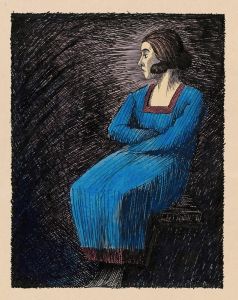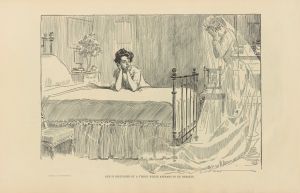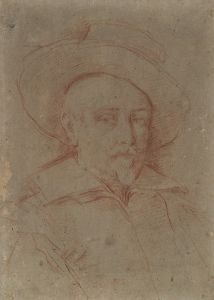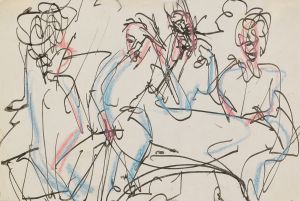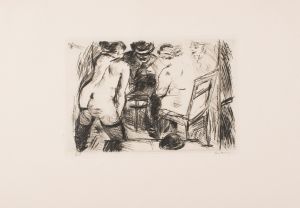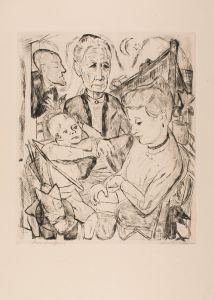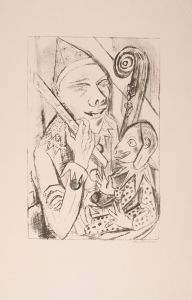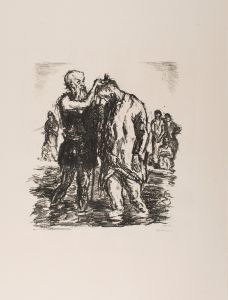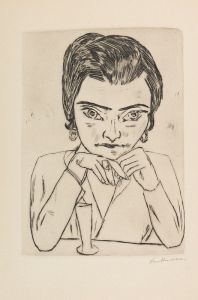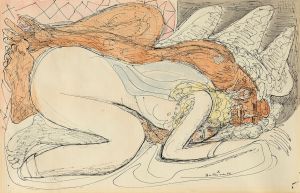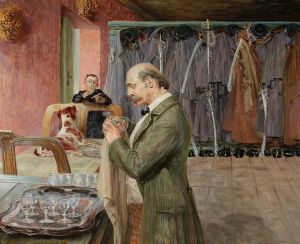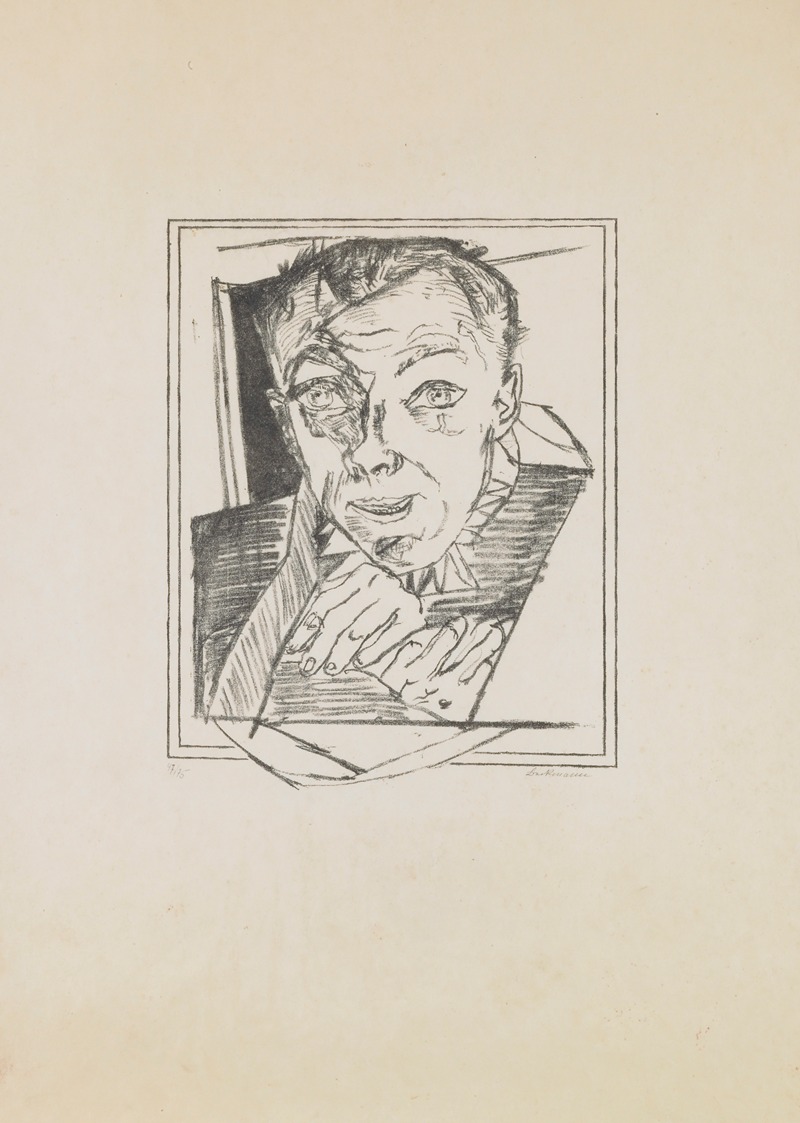
plate 1; Self-Portrait
A hand-painted replica of Max Beckmann’s masterpiece plate 1; Self-Portrait, meticulously crafted by professional artists to capture the true essence of the original. Each piece is created with museum-quality canvas and rare mineral pigments, carefully painted by experienced artists with delicate brushstrokes and rich, layered colors to perfectly recreate the texture of the original artwork. Unlike machine-printed reproductions, this hand-painted version brings the painting to life, infused with the artist’s emotions and skill in every stroke. Whether for personal collection or home decoration, it instantly elevates the artistic atmosphere of any space.
Max Beckmann's "Self-Portrait" (Plate 1) is a significant work that reflects the artist's distinctive style and the broader context of his life and times. Max Beckmann, a German painter and printmaker, was an influential figure in the early 20th-century art world, known for his contributions to the New Objectivity movement. His self-portraits are particularly renowned for their introspective and often somber qualities.
This self-portrait, like many of Beckmann's works, is characterized by its bold use of color and strong, expressive lines. Beckmann often used self-portraiture as a means of exploring his own identity and the human condition, and this piece is no exception. The painting captures Beckmann's intense gaze and thoughtful expression, offering a glimpse into the artist's psyche. His use of dark, rich colors and dramatic contrasts is typical of his style, which often conveys a sense of tension and emotional depth.
Beckmann's self-portraits are notable for their psychological complexity. In this work, he presents himself with a directness that invites viewers to engage with the artist on a personal level. The composition is carefully balanced, with Beckmann's figure dominating the canvas, yet there is an underlying sense of unease that permeates the work. This tension is a hallmark of Beckmann's art, reflecting the turbulent times in which he lived.
Born in 1884 in Leipzig, Germany, Beckmann experienced the upheavals of both World Wars, which had a profound impact on his work. His art often reflects the chaos and disillusionment of the early 20th century, and his self-portraits can be seen as a response to these external pressures. Beckmann's career was marked by periods of both acclaim and adversity. During the Nazi regime, his work was labeled as "degenerate art," and he was forced to flee Germany in 1937. He eventually settled in the United States, where he continued to paint until his death in 1950.
"Self-Portrait" (Plate 1) is a testament to Beckmann's resilience and his commitment to his artistic vision. Despite the challenges he faced, he remained dedicated to exploring the complexities of the human experience through his art. This self-portrait, like many of his works, is imbued with a sense of introspection and existential inquiry.
Beckmann's influence extends beyond his own time, as his work continues to be studied and appreciated for its emotional depth and technical mastery. His self-portraits, in particular, offer valuable insights into the artist's inner world and the broader cultural and historical context of his era. "Self-Portrait" (Plate 1) stands as a powerful example of Beckmann's ability to convey the intricacies of the human spirit through his art.





